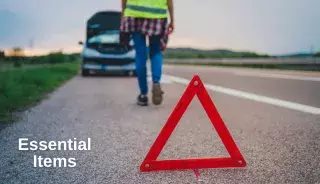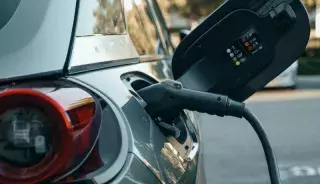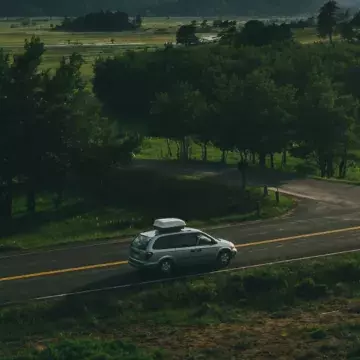Rules to Know For Driving in France
Whether you’re taking your car on the ferry or flying then hiring a car, there’s a variety of rules and regulations that making driving in France different to the UK (and I’m writing with experience, I was hit with a fine on day one of my last holiday in France!)
In this guide, we aim to give you an overview of the key points to consider when planning a holiday that includes driving in France.
Required Documents
There are a variety of documents you’ll need to have with you when driving in France, plus a couple of others that make life easier.
Valid UK Driving Licence
Make sure your photocard driving licence is current and valid.
Proof of Insurance
You will need to bring your insurance documents, but it’s no longer necessary to travel with a Green Card when driving in the EU
V5 Registration Document
If you’ve travelled with your own car to France, make sure you have the registration document so you can prove ownership
Helpful Documents
There are also some documents that are optional, but helpful to have if something goes wrong:
Proof of Breakdown Cover
Recommended in case of emergencies, but not mandatory. It’s helpful if you encounter mechanical issues while driving in France
European Accident Report Form
Although optional, it’s helpful in case of an accident, as it is recognised across Europe.
Mandatory Items to Take With You

There are certain items that are required, or strongly recommended, when driving in France.
UK Sticker
It is essential to display a UK sticker on the rear of your car. Following a change of rules in 2021, the traditional GB stickers that once marked British vehicles abroad are no longer accepted, so make sure your car sports the correct sticker to comply with the latest regulations.
Warning Triangle
If you stop on the roadside due to a breakdown or emergency, you must place a warning triangle at least 30 metres behind your vehicle so that other drivers know there is a hazard ahead.
Reflective Jackets
You must have a reflective jacket for each occupant in your vehicle. These should be easily accessible (e.g., in the glove compartment) so you can put them on before exiting the car in case of an emergency.
Spare Bulbs
Carrying a set of spare bulbs is recommended because French authorities expect drivers to be able to replace any faulty bulbs on their vehicles immediately if they go out.
Optional Items
These items aren't obligatory, but they may make life a little easier
First Aid Kit
It’s not a legal requirement to have a first aid kit in your car, although it can provide useful in case of minor accidents
Breathalyser Kit
These are no longer legally required when driving in France, so it’s entirely optional if you want to bring a kit.
Driving in Cities
If you are planning on driving in the centre of any of France's major cities, then you will need a Crit'Air emissions sticker to enter designated low-emission zones (ZCR or ZFE). You should also know that on high-pollution days, other cities may temporarily enforce restrictions where only vehicles with Crit’Air stickers can enter.
Where to Get a Crit-Air Sticker
You can order a Crit'Air sticker online from the French government website. You’ll need your vehicle’s registration information, and it typically takes a few weeks to arrive. The sticker you receive (from green to grey) depends on your vehicle’s emissions category and age, indicating its environmental impact.
Finding Low Emission Zones
You can find a list of low emission zones from websites such as Urban Access Regulations Europe: https://urbanaccessregulations.eu/countries-mainmenu-147/france
Driving Rules and Regulations
There are a few differences between driving in France and these are the UK - there are the main point you need to know about.
Driving on the Right-Hand Side
The main difference between driving in France and the UK is that in France, like most European countries, all vehicles must drive on the right-hand side of the road. This can feel unfamiliar for UK drivers, especially when approaching roundabouts, junctions and merging onto motorways, however most road systems are set up to guide you in the right direction. Our top tip is to always remember that the driver should always be close to the centre of the road - if they're by the kerb they are likely in the wrong lane!
Overtaking Rules
Overtaking in France is much the same as the UK. Drivers are expected to overtake on the left, except on multi-lane roads where lanes are moving at different speeds. Drivers must indicate to overtake and must not pass where visibility is limited or there are solid white lines to show overtaking is not allowed.
Roundabout Etiquette
Most roundabouts in France follow the same procedure as the UK, with vehicles entering the roundabout required to stop for those already on it. The exceptions are some older or rural roundabouts where vehicles entering from the right have priority. These are marked with signposts showing 'Priority à Droite'.
Speed Limits
Speed limits in France are slightly different to the UK too. Here's a summary of what you need to know.
Motorways
On French motorways (autoroutes), speed limits vary depending on weather conditions and are generally higher than in the UK. In dry conditions, the maximum speed is 130 km/h (around 81 mph), compared to the UK motorway limit of 70 mph (112 km/h). However, in wet weather, this limit is reduced to 110 km/h (about 68 mph). French motorways are often tolled, so be prepared to pay at toll booths, and always keep an eye out for speed limit changes, especially near exits and interchanges.
Dual carriageways
On dual carriageways in France, the speed limits are lower than on motorways but still vary based on conditions. In dry weather, the maximum speed limit is 110 km/h (about 68 mph), which is slightly lower than the UK’s dual carriageway limit of 70 mph (112 km/h). In wet conditions, the speed limit drops to 100 km/h (62 mph). French dual carriageways are marked with clear speed limit signs, so stay aware of these and adjust your speed accordingly.
Urban areas
In urban areas across France, the speed limit is typically 50 km/h (about 31 mph), similar to the standard limit in UK towns and cities. However, many French cities have introduced 30 km/h (19 mph) zones in residential or high-pedestrian areas to improve safety, and these zones are clearly marked with signs. Some larger cities, like Paris, have expanded these lower limits to cover much of the city to reduce traffic accidents and pollution. Always watch for posted signs, as speed limits can change frequently in urban areas, especially around schools, parks, and pedestrian crossings.
Rural roads
On rural roads in France, speed limits differ slightly from those in the UK. In dry weather, the standard speed limit is 80 km/h (about 50 mph), which is lower than the typical 60 mph (96 km/h) limit on UK rural roads. In wet conditions, this limit drops to 70 km/h (about 43 mph). However, some rural roads in France may have increased speed limits of 90 km/h (56 mph), particularly in regions where road conditions and visibility are better, but this will be clearly marked with signs. Remain alert for frequent speed limit changes, especially in areas with sharp bends, intersections, or narrow lanes.
Penalties for Speeding
In France, penalties for speeding are strictly enforced, and UK drivers face significant fines and even potential legal consequences if caught exceeding speed limits.
Fines
Fines vary depending on how much over the speed limit you're driving. Here’s a general breakdown:
- Up to 20 km/h over the limit: €68 fine in areas with a limit over 50 km/h, or €135 in lower-limit zones.
- 20 to 49 km/h over the limit: €135 fine, with possible court increases.
- 50 km/h or more over the limit: This is treated as a serious offence, resulting in a €1,500 fine and immediate driving ban within France.
Penalty Points
France uses a points system, but it doesn’t directly apply to UK licences. However, serious speeding offences (particularly those over 50 km/h) can result in a temporary or even permanent ban from driving in France. Additionally, UK authorities may be notified of serious offences, which could result in points or repercussions on your UK licence upon returning home.
On-the-Spot Fines
French police can issue fines on the spot for speeding violations, and they may require immediate payment if you’re a non-resident. If you’re unable to pay, your vehicle could be impounded until the fine is settled.
Speed Cameras
In France, speed cameras are widespread and can be found on motorways, rural roads, and in urban areas, and they don't always have camera warning signs to notify you of their presence.
Alcohol Limits and Safety Regulations
In France, the legal blood alcohol limit for drivers is lower than in the UK. The legal limit is 0.5 grams per litre (g/L) of blood, which is about one small glass of wine. This is stricter than the UK's limit of 0.8 g/L.
If you are caught driving with a blood alcohol level between 0.5 g/L and 0.8 g/L, you may face an on-the-spot fine of €135 and a possible licence suspension. If your blood alcohol level exceeds 0.8 g/L you may receive of up to €4,500, a suspension of your licence, have your vehicle impounded and, in most serious cases, face potential imprisonment.
Seat Belt Laws
Seat belt laws in France are similar to those in the UK. Seatbelts are mandatory for all passengers, and children under 10 must travel in an appropriate child seat or booster if they’re under 135 cm tall. Failure to wear a seat belt can lead to an on-the-spot fine of €135 for each unbelted passenger. The driver is responsible for children in their car, so they may be fined for each passenger under 18 who is not wearing a seat belt or isn’t in the correct restraint.
Navigating French Roads

There are a small number of differences in road signs and signals between France and the UK that are helpful to know.
Priority à Droite (Priority to the Right)
This rule is unique to France, where drivers must yield to vehicles approaching from the right at certain intersections. It’s typically applied in small towns or rural areas and is indicated by a yellow diamond sign with a white background.
Stop Signs and Give Way Markings
In France, stop signs are red with the word 'STOP', but Give Way signs are marked as 'Cédez le Passage' and are often highlighted by white triangular road markings. Drivers must fully stop at a 'STOP' sign, but at a 'Cédez le Passage,' it's okay to slow and check for traffic without stopping.
Traffic Lights
French traffic lights are mostly the same as UK lights, but flashing amber lights are common and indicate caution, allowing drivers to proceed with care if the way is clear. Flashing red lights mean stop and are often found near railway crossings and pedestrian zones.
'Rappel' Signs
You’ll often see signs marked 'Rappel' meaning 'reminder.' These signs reiterate the speed limit or other restrictions already in place and serve as reminders rather than indicating new limits.
Parking Signs
French parking signs are generally blue with a white 'P' indicating permitted parking. However, signs with a red circle and a diagonal line indicate no parking (stationnement interdit). Temporary or restricted parking is often marked with additional signage or curb markings.
What to Do in Case of a Breakdown
If you experience a breakdown while driving in France, there are specific steps to follow to ensure safety and compliance with local regulations:
Move to a Safe Spot
If possible, move your vehicle to the hard shoulder or a safe spot off the main road. On motorways, aim to reach an emergency breakdown area marked by orange SOS phones every 2km.
Activate Hazard Lights
Turn on your hazard lights to alert other drivers of your presence, especially if your vehicle remains on or near the road.
Wear Reflective Jackets
All occupants should wear reflective jackets before exiting the vehicle. In France, it’s mandatory for everyone in the car to have one in case of an emergency.
Place the Warning Triangle
Set up your warning triangle at least 30 metres behind your car to give oncoming traffic advance warning. On motorways, this step is optional due to the high speed of traffic, where stopping to place the triangle could be dangerous.
Contact Emergency Assistance
For motorway breakdowns, use the nearest orange emergency phone, which connects directly to local motorway authorities who will dispatch help. Alternatively, you can call 112 for general emergencies or 17 for police assistance.
Wait Safely
Once you’ve called for help, stand behind any safety barriers rather than remaining in the car or on the hard shoulder. Ensure all passengers, especially children, are safe and away from traffic.
Breakdown Cover
Having European Breakdown Cover is a smart choice when driving in France, as it provides essential support and can save you from hefty expenses and stress in case of a vehicle failure. French motorways are often serviced by authorised towing companies, which means breakdown recovery without proper cover can be costly, with charges adding up quickly. European Breakdown Cover ensures that if your car breaks down, you can receive roadside assistance, towing, and even accommodation or alternative transport if needed. It’s particularly helpful on toll roads, where you’re required to use approved assistance, and it covers language barriers by connecting you with English-speaking support, making the process smoother.
Petrol and Diesel
In France, all stations offer unleaded petrol (Essence Sans Plomb 95 or 98) and diesel (Gazole). SP98 is priced slightly higher due to its higher-octane level, providing a bit more performance but at a premium. Diesel is widely available and often less expensive than petrol.
As in the UK, petrol and diesel tend to be cheapest in rural areas and at supermarkets, with average prices for unleaded usually hovering around €1.70 to €2.00 per litre, while diesel is generally about €0.10 to €0.20 cheaper per litre. It’s a good idea to fill up at supermarkets where fuel prices are typically lower and to check apps or websites for updated prices to help manage costs.
Electric cars

France does not have as many public charging points for electric vehicles as in the UK. There are around 30,000, which means some areas of the country will be less well covered than others. Charging stations are mainly to be found at supermarkets, hotels, motorway service stations, retail parks and leisure attractions, like in the UK. The big cities are well served for charging stations, with plenty of on-street points in city streets.
If you are planning a journey, the best way to find charging points is to use an app or website like Chargemap or Electromap to find charging stations across France and plan your ideal route.
Not many EV chargers in France accept bank cards, so both Chargemap and Electromap offer charging passes to ensure you can access the widest range of chargers.
Toll Roads
France has many more motorway toll roads than the UK, so it's important to plan for toll expenses, especially on long-distance trips. You can use toll calculators, such as ViaMichelin Route Planner, to plan your route and calculate your costs.
There are several options when paying for tolls, including cash and credit or debit cards. Drivers from the UK can also pre order a Télépéage tag (also known as a Liber-t tag) from companies like Sanef or Emovis. This device allows automatic payment at toll booths, where drivers use the designated Télépéage lane without stopping. The tolls are automatically charged to your account, which is particularly convenient during busy travel periods.
Driving to Siblu Holiday Parks from the UK
Lots of UK customers drive to Siblu Holiday Parks every year. The easiest option is our holiday park in Normandy, Domaine de Litteau, which is less than 60 minutes from the ferry port at Caen.
The Siblu holiday parks in Brittany, on France's north west coast, are also easy to reach from the ferry posts at Caen and Cherbourg, with drive times of around four hours to Domaine de Kerlann, and Le Conguel.
Although further south, drive times from Caen to the popular west coast and our holiday parks in the Vendee from Caen are also around the four hour mark, thanks to motorways that allow for a speedier route. And sunny Charente Maritime is around six hours from Caen.
If you are planning a drive to visit any of our south coast holiday parks in Languedoc for the first time, don't under-estimate the time it will take - a journey from the ferry port at Calais to La Carabasse in Vias takes around 11 hours.
